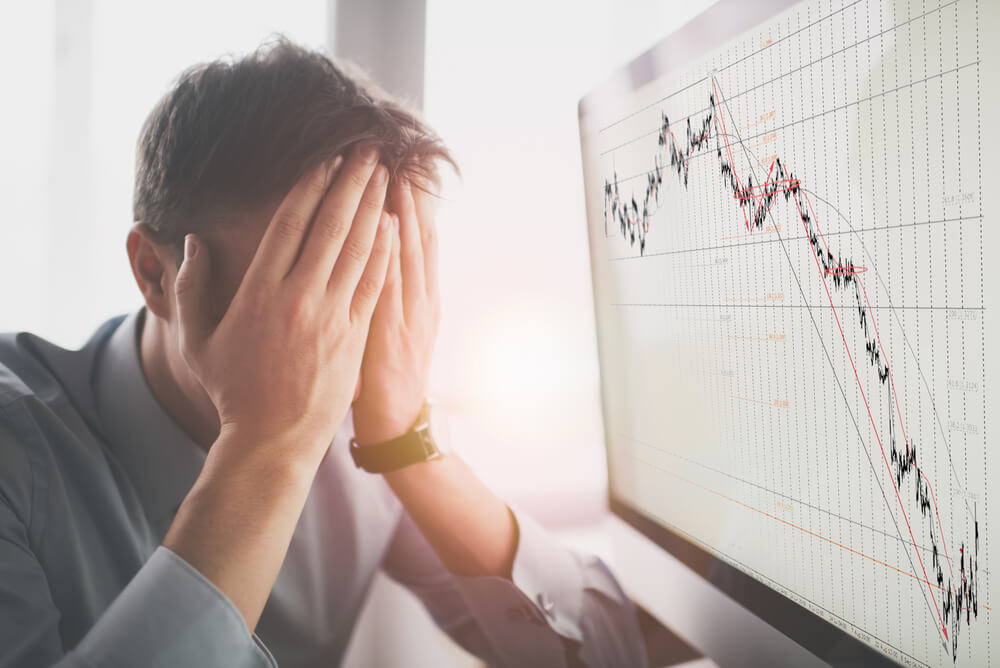It’s getting nasty out there. After nearly a year of what felt like uninterrupted gains, the stock market is getting choppy again. After peaking earlier this month, the S&P 500 is down almost 3%.

But the Nasdaq, where most of the action has been over the past year, is down about 6% from its recent highs. And investors seem to be wary of buying the dip.
If you look at cryptocurrencies, it’s an outright bloodbath. As I write this, Bitcoin is down by more than 40% from its April highs. For more insight into the current state of cryptos, check out research analyst Matt Clark’s latest episode of The Bull & The Bear podcast here.
So, what is the story here? Is the party over? Or is this just another mild sell-off speedbump on the great bull-market highway?
Let’s break this down and consider a few points. Think of this as your road map through market volatility.
You Should Always Sell to the Sleeping Point
To start, if you’re feeling uncomfortable at the moment, you’re probably taking too much risk. There’s an old trader’s maxim that you should “sell to the sleeping point.” In other words, if you can’t sleep at night, reduce your position sizes until you can. There’s no shame in that, and it’s no sign of weakness. Wall Street is littered with the corpses of traders and entire firms that held too much risk for too long.
Unless you’re a professional, this isn’t a contest. You have nothing to prove to anyone. If you’re feeling jittery, take some chips off the table. That doesn’t mean you have to sell everything. Just sell enough to prevent a stomach ulcer or hair loss.
Corrections and Sell-Offs Are Normal
Also, remember that corrections are normal. The market does not go up in a straight line. Over the past 20 years, we’ve had a market correction of at least 10% in 11 of those years, and we had two other years in which we got awfully close to that 10% number after some sell-offs. The average dip was about 15%, and the market recouped those losses pretty quickly in most cases.
Yes, there are proper bear markets too. Now and then, we get truly nasty ones like 2008. The S&P 500 lost more than half its value before the dust settled in that downtrodden market. But these are rare.
Is what we are experiencing today a garden-variety correction, or is it the start of a real bear market?
I don’t have a crystal ball, but I can tell you a mild correction is far more likely. We even saw proof of that as major indexes rebounded most of their losses later in the day Wednesday.
Risk Management Matters
I could write a book about risk management. Plenty of people already have. Every successful investor has their techniques, and you may have a few of your own already.
But to me, the single most important risk management tool is position sizing.
Whenever I’ve seen an investor or trader blow up, it was almost always because they took oversized positions within a certain asset and then failed to manage them.
Here’s my rule of thumb for position sizing. Most “normal” stock positions shouldn’t be more than about 3% to 5% of your portfolio. More volatile things like cryptocurrencies or options should be smaller. Diversified ETFs or mutual funds could be bigger, of course. But as a general rule, a passive investor shouldn’t take outsized positions. You and I aren’t Warren Buffett. No one is offering us a seat on the board of directors, and we have no inside information. We protect ourselves by keeping our positions manageable.
Apart from position sizing, stop losses can help manage risk as well. You should never enter a trade unless you know ahead of time under what conditions you plan to sell. Set a price target on the upside and a stop loss on the downside. This forces you to stay disciplined. And it does wonders for risk management.
Once again, I don’t have a crystal ball. No one does. But when faced with a rocky market, especially after a nice ride up, it helps to take a step back and reassess our risk. Then at least we aren’t caught holding the bag when markets sink like they did on Wednesday.
To safe profits,
Charles Sizemore
Editor, Green Zone Fortunes
Charles Sizemore is the editor of Green Zone Fortunes and specializes in income and retirement topics. Charles is a regular on The Bull & The Bear podcast. He is also a frequent guest on CNBC, Bloomberg and Fox Business.
